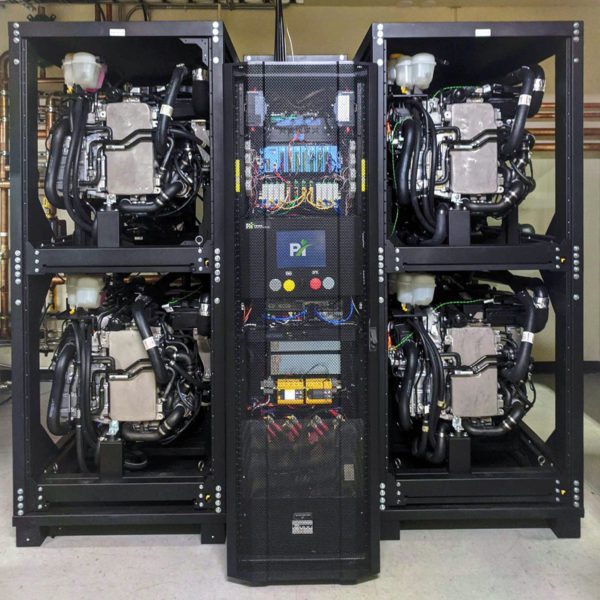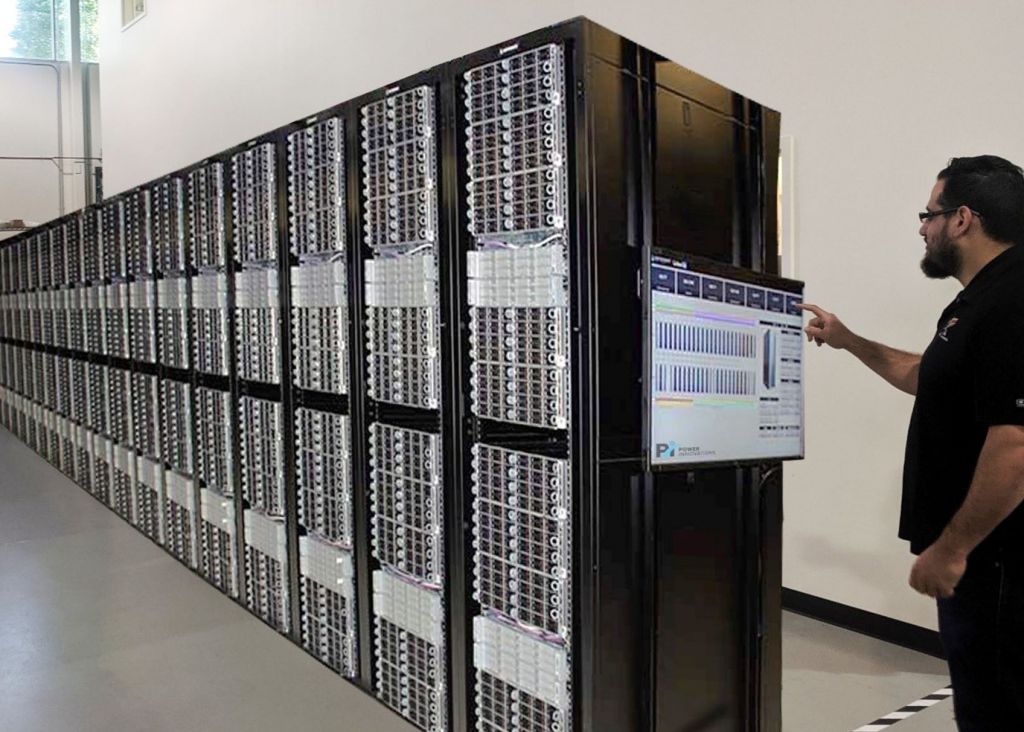
Microsoft has announced the world's first large-scale experiment to use hydrogen fuel cells to power servers in a data center.
The installation of 250 kW was made by Power Innovations . In the future, such a 3MW unit will replace traditional diesel generators, which are now used as a backup power source in data centers.
Hydrogen is considered an environmentally friendly fuel because only water is produced as a result of its combustion.
Microsoft has set the goal of completely replacing all diesel generators in its data centers by 2030 .
As in other data centers, in Azure data centers, diesel generators are used as a backup power source when electricity is lost through the main channel. This hardware is idle 99% of the time, but the data center still keeps it up and running to keep it running smoothly in the event of rare failures. In practice, at the same Microsoft, they only undergo monthly health checks and annual stress testing, when the load from them is actually delivered to the servers. Mains power failures do not occur every year.
However, Microsoft has calculated that the latest models of hydrogen fuel cells are already more cost-effective than diesel generators.
In addition, batteries are now used for backup power (UPS), which provide power in a short interval (from 30 seconds to 10 minutes) between disconnecting the mains and raising diesel generators. The latter are able to work continuously until the gasoline runs out.
A hydrogen fuel cell replaces both the UPS and the diesel generator. It consists of hydrogen storage tanks and an electrolysis unit, which splits water molecules into hydrogen and oxygen. This is what the Power Innovations 250 kW model looks like in reality:

The unit is simply connected to the existing electrical network - and does not require external fuel supply, like a diesel generator. It can be integrated with solar panels or wind farms to generate enough hydrogen to fill cisterns. Thus, hydrogen is used as a chemical accumulator of electricity for solar and wind power plants.
In 2018, researchers from the National Renewable Energy Laboratory in Colorado (USA) conducted the first successful experiment to power a server rack from proton exchange membrane (PEM) fuel cells, that is, proton exchange membranes .
PEM is a relatively new technology for producing hydrogen. Now such installations are gradually replacing traditional alkaline electrolysis. The heart of the system is the electrolysis cell. It has two electrodes, a cathode and an anode. A solid electrolyte is located between them, this is a proton-exchange membrane made of a high-tech polymer.

Technologically, protons flow stably inside the membrane, while electrons move along the outer channel. Deionized water enters the anode, where it is split into protons, electrons and gaseous oxygen. Protons pass through the membrane, and as electrons move through an external electrical circuit. At the cathode, protons and electrons reunite to form hydrogen gas (H 2 ).
It is an extremely high-performance, reliable, cost-effective method of producing hydrogen directly at the point of its consumption. Then, when hydrogen and oxygen combine, water vapor is formed and electricity is generated.
In September 2019, Power Innovations began experimenting with a 250-kilowatt fuel cell that powers 10 full server racks. In December, the system passed a 24-hour reliability test, and in June 2020, a 48-hour one.
During the last experiment, four such fuel cells were in automatic mode. Recorded indicators of the record :
- 48 hours of continuous work
- Generated 10,560 kWh of electricity
- Used 814 kg of hydrogen
- Produced 7000 l of water

Now the company plans to design a 3 megawatt fuel cell using the same technology. Already, in terms of power, it will fully match the diesel generators installed in Azure data centers. Hydrogen Council , an
international organization that brings together equipment manufacturers, transport companies and large customers, is promoting hydrogen as a fuel - Microsoft has already appointed its representative on this council. In principle, all technologies for hydrogen production and power generation are already available. The challenge for the organization is to scale them. There is still a lot of work to do.
Experts see a great future for PEM fuel cells. Over the past two years, their cost has decreased by about four times. They perfectly complement photovoltaic and wind power plants, storing energy during periods of maximum generation - and giving it to the grid at times of peak load.
Again, they can be used for brokerage on the energy exchange, when the system buys energy during periods of minimum or even negative prices - and gives it back at moments of maximum cost. Such broker systems can work automatically like trading bots.
Advertising
The redundant power supplies of our data centers work, though not on hydrogen, but the reliability is on top! Our epic servers are powerful VDS in Moscow powered by modern processors from AMD.
How we built a cluster for this service in this article on Habré.
